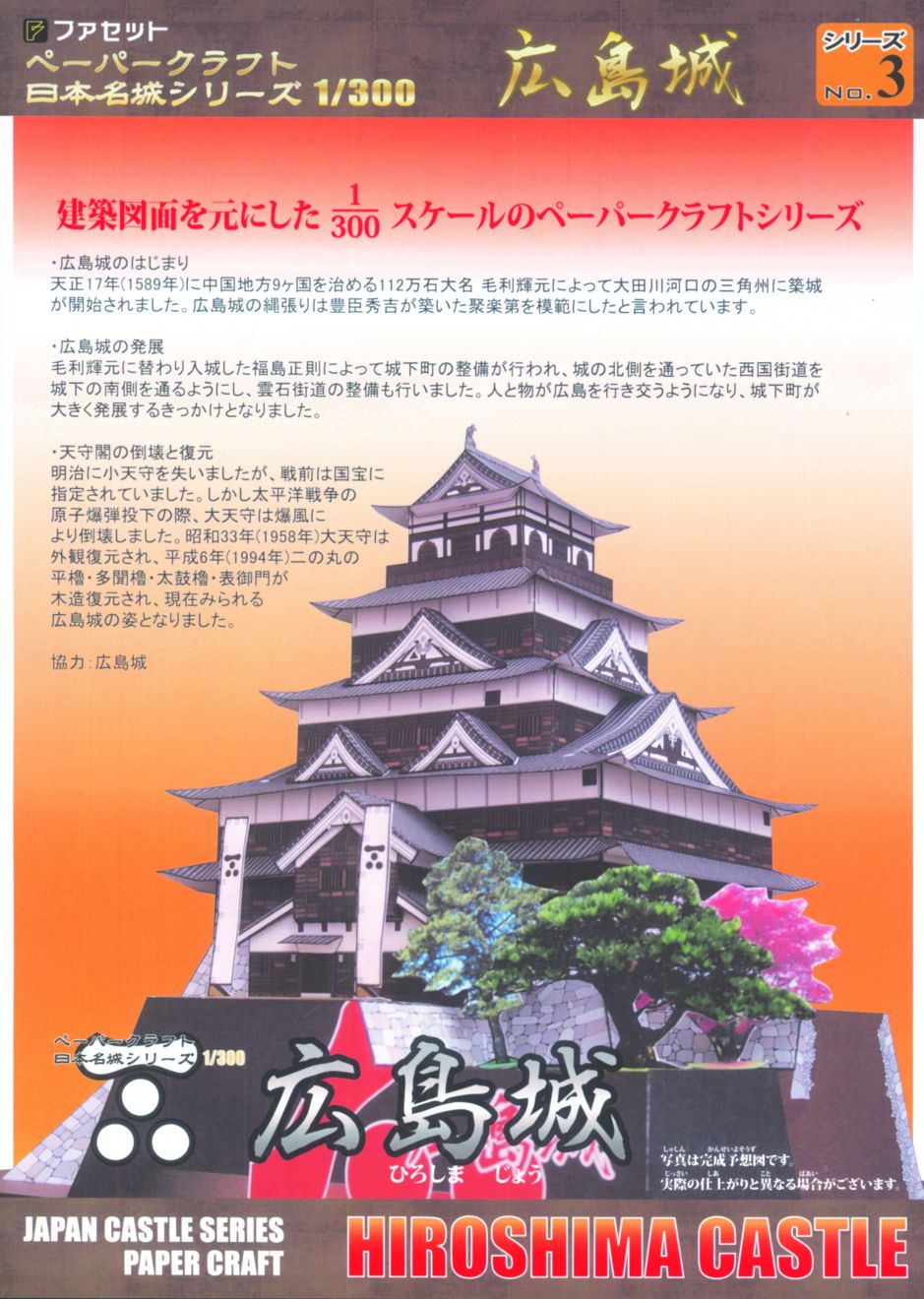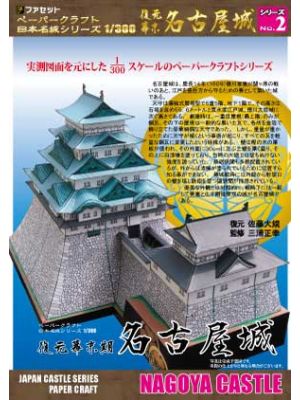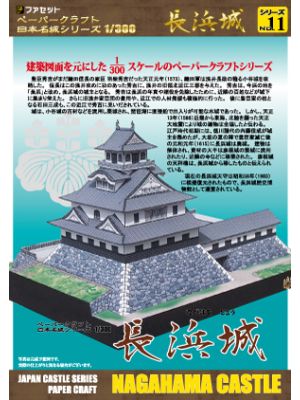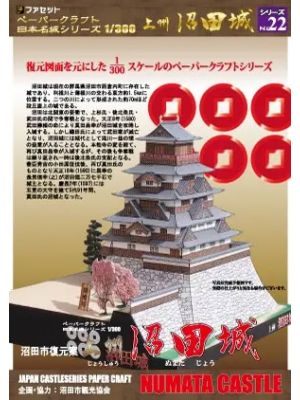Hiroshima Castle
Scale: 1/300
Skill Level: easy
Size (LxWxH): 136x147x155 mm (5x5x6 inch)
Construction of Hiroshima Castle began in 1589. The model of the fortress was developed based on old drawings, documents from the restoration and reconstruction, and the current condition.
| Product type | Papermodel |
|---|---|
| Manufacturer | Facet |
| Scale | 1/300 |
| Designer | Shigeru Ishihara |
| Difficulty | easy |
| Sheet size | DIN A4 |
| Sheets | 4 |
| Parts | 64 |
| Length | 136 mm (5.35 inch) |
| Width | 147 mm (5.79 inch) |
| Height | 155 mm (6.1 inch) |
| Bauanleitung | Pictures |
Hiroshima Castle was constructed by Mori Terumoto, who ruled over nine provinces in the Chugoku region and had a fief of 1.12 million koku. The castle featured a five-tiered, five-story watchtower-type main keep, with two smaller towers to the east and south, connected by passageways. The exterior was adorned with black lacquered clapboards, modeled after Toyotomi Hideyoshi's Osaka Castle, and the roof was made of gold leaf tiles, creating a magnificent sight. The interior, however, was simple and lacked a ceiling. Construction began in 1589, starting with major projects like filling in the river’s sandbar and dredging the moat. The overall structure of the castle was modeled on Osaka Castle, while the layout was based on Jurakudai. Built around the same time as Toyotomi Hideyoshi's Bunroku Invasion, there were hopes that Hiroshima Castle would serve as a rear base. There are stories of Kuroda Josui being sent to support the construction and staying at the castle during this period.
After the Battle of Sekigahara in 1600, Fukushima Masanori took over from Mori Terumoto, whose fief had been reduced to two provinces. Masanori altered the Saigoku Kaido, which ran along the north side of the castle, to run along the south side, and developed the Unseki Kaido, expanding the merchant town. However, he faced criticism for carrying out repairs without notifying the shogunate, leading to the demolition of the upper stone wall of the main citadel, which had two levels. Remnants of this wall can still be seen today. In 1619, the Asano clan replaced Masanori and lived in the castle for 250 years, spanning 12 generations, until the Meiji era.
During the Meiji era, the small castle tower was lost, and only the large tower was preserved. Before World War II, Hiroshima Castle was designated a national treasure under the old system, along with other existing buildings. Although it withstood the heat rays of the atomic bomb during the Pacific War, it collapsed in the blast immediately afterward, scattering a large amount of building materials on the castle tower base and in the moat on the north side. The current main castle tower was restored in 1958, and from 1989, several other buildings, including the Ninomaru, were restored using wood.


 Deutsch
Deutsch





















